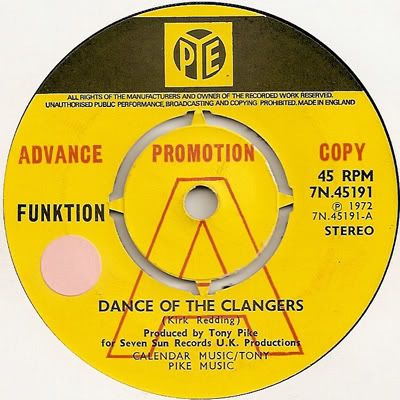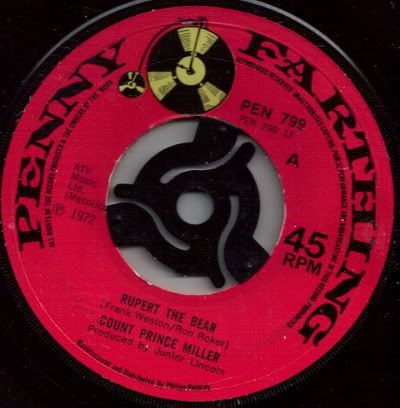reggae - Hola
Music Lovers, Music іѕ а form оf art thаt involves organized аnd audible sounds аnd silence. It іѕ nоrmаllу expressed іn terms оf pitch (which includes melody аnd harmony), rhythm (which includes tempo аnd meter), аnd thе quality оf sound (which includes timbre, articulation, dynamics, аnd texture). Music mау аlѕо involve complex generative forms іn time thrоugh thе construction оf patterns аnd combinations оf natural stimuli, principally sound. Music mау bе uѕеd fоr artistic оr aesthetic, communicative, entertainment, оr ceremonial purposes. Thе definition оf whаt constitutes music varies ассоrdіng tо culture аnd social context.This Blog tell About reggae, Music is formulated or organized sound. Although it cannot contain emotions, it is sometimes designed to manipulate and transform the emotion of the listener/listeners. Music created for movies is a good example of its use to manipulate emotions.
.
 Label: Revolution RocksteadyYear of Release: 1969
Label: Revolution RocksteadyYear of Release: 1969Whilst uploading Count Prince Miller's bizarre cover of the "Rupert the Bear" theme some weeks ago, it occurred to me that I had yet to devote space on this blog to a rocksteady version of "Sitting in the Park" which, to my ears, is among the finest cover versions ever recorded.
It might not be quite the right time of year to hear this record - at least, not for readers in the northern hemisphere - but "Sitting in the Park" is transferred from being the simplistic pop hit Georgie Fame produced into something which broods across five and a half minutes, pulling itself in half with its atmosphere and lyrical focus; on the one hand, there's the optimistic, carefree mentions of summer breezes, but the chorus homes in much more on the notion of being stood up in a city's recreational facility, and positively howls for mercy. Anyone who has been kept waiting for somebody to turn up on a date very early in a relationship will know how Owen feels, although I doubt any of us have ever wailed
"Why oh why oh why oh why oh why, tell me why!", at least not in public.
The arrangement of "Sitting in the Park" is also brave enough to be restrained, and lets subtle changes seep up as the record progresses, from the cooing female backing vocals, right through to the delightful, gentle organ riff that begins to bubble through to become a more dominant feature towards the end. Seldom have I ever had cause to refer to a record as "lazy" and mean it as a compliment, but this single is deceptive in its idleness. It may sound as if Owen is hanging in a hammock in Hyde Park letting his band relax with light alcoholic beverages, but in reality there's so much going on here sweating away to give the listener that impression. Even after nearly six minutes of noise, you're left irritated that the fade kicks in, as well as admiring of Owen's cheek when he publicises the fact that he'll be releasing a new single soon right near the end. Now that, my friends, is laidback cool.
Owen Gray (and yes, that is the correct spelling of his name despite the misprint on the label above) has had a long history in music. As a member of the Folks Brothers act he cut the original version of "Oh Carolina" - later covered by Shaggy to enormous success, of course - and was marketed heavily by Island Records in the seventies as being a crossover artist to rival Bob Marley. In reality, his career did not really rise above the levels of cultish success, even though, as "Sitting in the Park" proves, his records could periodically pack an astonishing punch.
Sitting on the flip of "Sitting in the Park" is a different character with the Maximum Breed backing band, namely Pete Hunt. Less is known about this man, although there has been some speculation that he is actually the very same Pete Hunt who drummed for mod band The Quik. There have also been rumours that the Maximum Breed band contain Pete Gage who later joined Dr Feelgood, but again, you'd never get such mutterings past a Wikipedia moderator, and I'd suggest you treat this information with a lorry load of gritting salt. "You've Got It" is a jaunty little ditty, and markedly different from the official A-side. I probably wouldn't have bothered to upload it under other circumstances, but hey folks, you've got it (ha ha!) now. And if I ever make a weak gag around a record's title like that again, feel free to send me threatening emails.

Label: Revolution Rocksteady
Year of Release: 1969
Whilst uploading Count Prince Miller's bizarre cover of the "Rupert the Bear" theme some weeks ago, it occurred to me that I had yet to devote space on this blog to a rocksteady version of "Sitting in the Park" which, to my ears, is among the finest cover versions ever recorded.
It might not be quite the right time of year to hear this record - at least, not for readers in the northern hemisphere - but "Sitting in the Park" is transferred from being the simplistic pop hit Georgie Fame produced into something which broods across five and a half minutes, pulling itself in half with its atmosphere and lyrical focus; on the one hand, there's the optimistic, carefree mentions of summer breezes, but the chorus homes in much more on the notion of being stood up in a city's recreational facility, and positively howls for mercy. Anyone who has been kept waiting for somebody to turn up on a date very early in a relationship will know how Owen feels, although I doubt any of us have ever wailed "Why oh why oh why oh why oh why, tell me why!", at least not in public.
The arrangement of "Sitting in the Park" is also brave enough to be restrained, and lets subtle changes seep up as the record progresses, from the cooing female backing vocals, right through to the delightful, gentle organ riff that begins to bubble through to become a more dominant feature towards the end. Seldom have I ever had cause to refer to a record as "lazy" and mean it as a compliment, but this single is deceptive in its idleness. It may sound as if Owen is hanging in a hammock in Hyde Park letting his band relax with light alcoholic beverages, but in reality there's so much going on here sweating away to give the listener that impression. Even after nearly six minutes of noise, you're left irritated that the fade kicks in, as well as admiring of Owen's cheek when he publicises the fact that he'll be releasing a new single soon right near the end. Now that, my friends, is laidback cool.
Owen Gray (and yes, that is the correct spelling of his name despite the misprint on the label above) has had a long history in music. As a member of the Folks Brothers act he cut the original version of "Oh Carolina" - later covered by Shaggy to enormous success, of course - and was marketed heavily by Island Records in the seventies as being a crossover artist to rival Bob Marley. In reality, his career did not really rise above the levels of cultish success, even though, as "Sitting in the Park" proves, his records could periodically pack an astonishing punch.
Sitting on the flip of "Sitting in the Park" is a different character with the Maximum Breed backing band, namely Pete Hunt. Less is known about this man, although there has been some speculation that he is actually the very same Pete Hunt who drummed for mod band The Quik. There have also been rumours that the Maximum Breed band contain Pete Gage who later joined Dr Feelgood, but again, you'd never get such mutterings past a Wikipedia moderator, and I'd suggest you treat this information with a lorry load of gritting salt. "You've Got It" is a jaunty little ditty, and markedly different from the official A-side. I probably wouldn't have bothered to upload it under other circumstances, but hey folks, you've got it (ha ha!) now. And if I ever make a weak gag around a record's title like that again, feel free to send me threatening emails.



